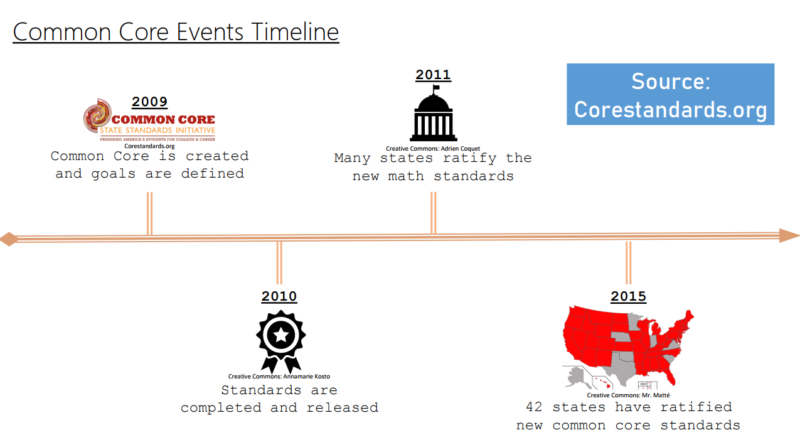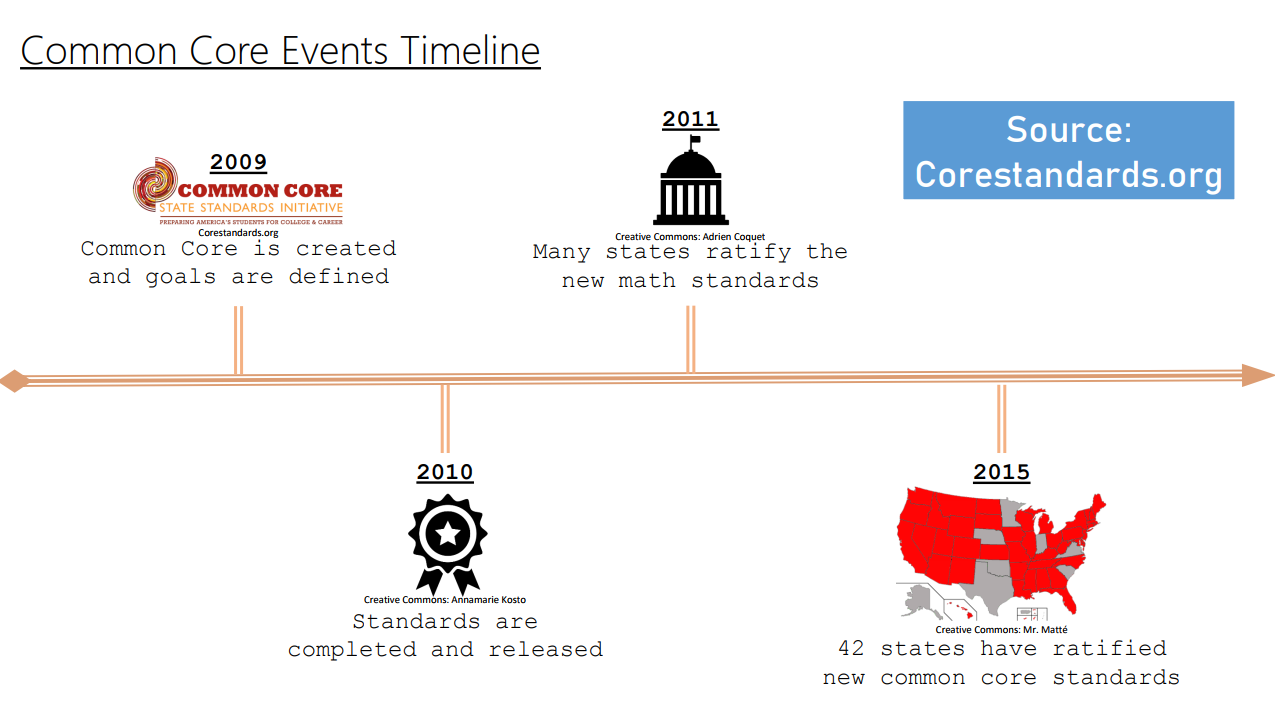Common Core sets new education standards

By Eliot Liederman,
BlueDevilHUB.com Staff–
One day, in sophomore Marco Pellegrini’s math class, his teacher grew very frustrated.
“My current math teacher was really upset with the wording of the lesson,” Pellegrini said. “So the next day, when we came into class, he had a lesson using the old textbooks.”
Senior William Johnson holds a strong disdain for Common Core.
“I help my sister with it and it doesn’t make any sense,” Johnson said.
Confusion and frustration about Common Core leads many students and teachers alike to inquire: Why the change?
The simple purpose is to prepare students for a post-high school career or education, but it is more complicated than that.
According to the Common Core website, state leaders from 48 states established Common Core in 2009. It resulted from a shared perception that the various practices of math education at the time were not quite good enough.
The goal of Common Core, as stated on a file linked from the website, is to have standards that “as a whole must be essential, rigorous, clear and specific, coherent and internationally benchmarked.”
Common Core defines these standards as preparing students for college or the workforce, and they consist of five main parts: driving an effective policy, alignment with difficulty of college work, “rigorous” preparation of students for their futures, uniform and comparable curriculum on an international level, and course material based on research.
According to UC Davis professor and Common Core researcher Michal Kurlaender, the new Common Core math program differs from previous programs in that it moves away from memorization and towards a more complete grasp of the concepts and subject as a whole.
“That’s why there’s so much attention to reasoning and application of math to ‘real world’ problems,” Kurlaender said.
Kurlaender agreed the main motivation for the transition to Common Core was to improve students’ college readiness and to standardize education among states, but put a particular emphasis on the first reason.
“It is really [improving students’ college readiness] that ultimately motivated states to move towards these more rigorous standards,” Kurlaender said.
Many students, including sophomore Lyna Jiang, disagree that Common Core is successful. Jiang was previously a part of the Common Core program until Integrated Math 3 Accelerated, when she tested out and moved into Calculus AB.
“I don’t like Common Core because I felt it went at a much slower pace,” Jiang said. “[I] don’t have to explain my thoughts in calculus but Common Core was more English than math.”
Sophomore Robert Yang, who has never taken a Common Core math class due to testing out in seventh grade, agrees. According to Yang, traditional math education is doing a sufficient job of preparing him for college.
“It’s completely fine, I don’t know why they needed to change it,” Yang said.
Math teacher Derik Birdsall maintains that Common Core is a step in the right direction.
“I agree with the goals and think it’s the right direction for education to go,” Birdsall said.
He still feels it needs work, however,due mainly to its unfamiliarity. Birdsall believes in time, the program will improve.
“In terms of preparing kids for college it is equal [to traditional education] right now but it will probably do a better job in the future as teachers learn to teach it better,” Birdsall said.
This however is one of the major critiques Michael Leonard, founder and tutor of Mike and Terri’s Davis Tutoring Center, has with Common Core.
“The teaching relies completely on the teacher,” Leonard said. “[It] prevents kids from being able to learn on their own independently, [and] overemphasizes group learning.”



